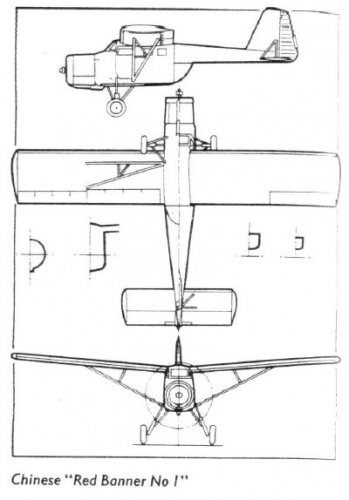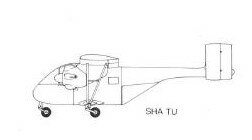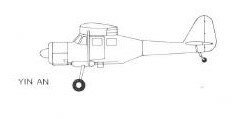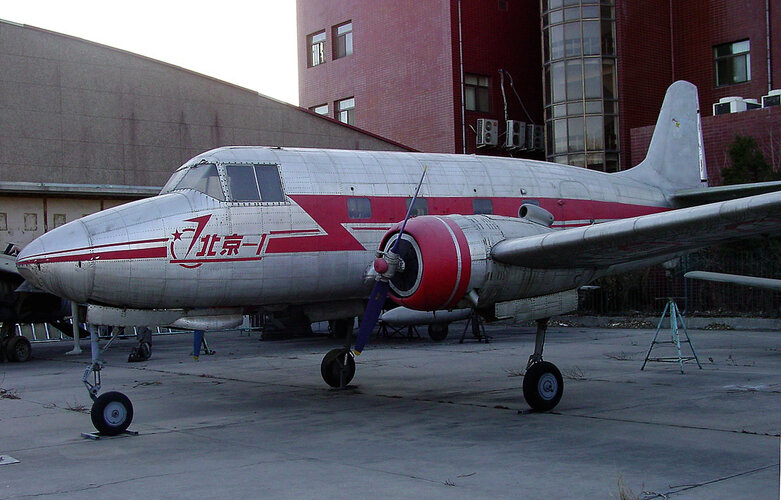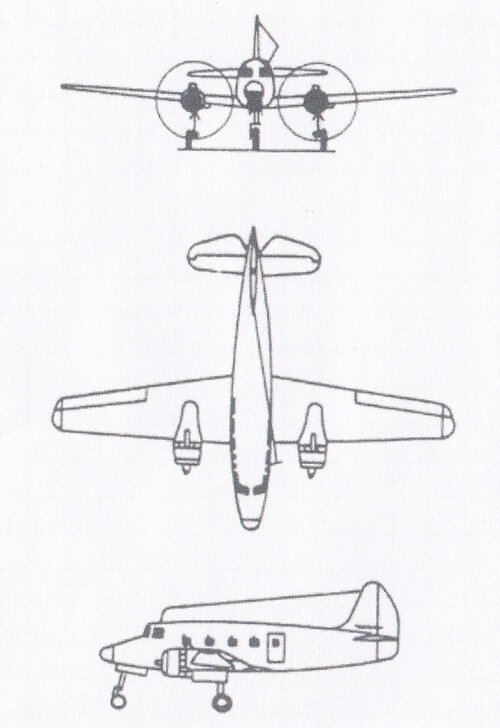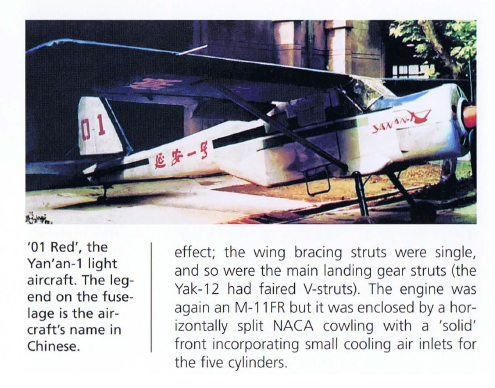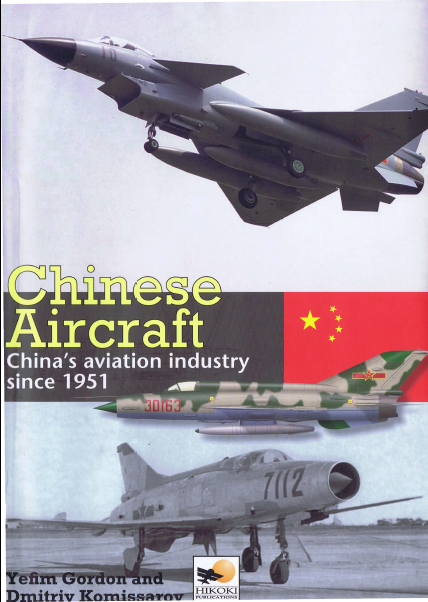- Joined
- 26 May 2006
- Messages
- 32,669
- Reaction score
- 11,875
Hi,
http://www.flightglobal.com/pdfarchive/view/1962/1962 - 1284.html
http://www.flightglobal.com/pdfarchive/view/1962/1962 - 1287.html
http://www.flightglobal.com/pdfarchive/view/1962/1962 - 1284.html
http://www.flightglobal.com/pdfarchive/view/1962/1962 - 1287.html
Peking No 1range, 670 miles.
Largest of the light twins,
this aircraft carries a crew of two and eight
passengers and is powered by locally built
260 h.p, AI-14 radial engines. It is a conventional
all-metal low-wing monoplane,
with retractable tricycle undercarriage. Fullspan
slots are used to ensure good shortfield
capabilities.
The Chinese Press has stated that the
Peking No 1 was built in only 100 days
at the Institute of Aeronautical Engineering
in Peking. It flew for the first time on
September 24, 1958, and was handed over
formally to the national civil aviation
authorities a week later, on October 1, the
ninth anniversary of the establishment of
the Chinese Communist government. Since
then very little has been heard of it.
• Span, 57ft 5in; length, 42ft 8in; max
speed, 186 m.p.h.; service ceiling, 15,750ft;
Vee-bracing instead of a single strut each side,
Yungari No 1 Nokadaun
Except that it has
a stepped windscreen and conventional
nose, this twin-engined light transport
is almost identical with the Czech Super
Aero 45. It carries a pilot and either four
passengers or 1,4001b of freight.
Construction of the prototype was completed
at the Kharbin Engineering Works
in 81 days in 1958, and production deliveries
are said to have started before the end
•of that year.
Capital No 1 Sha-Tu
This little twin-engined
pod-and-boom transport could be
mistaken for the Antonov An-14 Pchelka
at first glance. In fact, it is considerably
smaller, with two 160 h.p. M-11FR engines
instead of the 260 h.p. AI-14Rs fitted in the
An-14. Other differences include the use of
and the lack of tailplane dihedral.
Like the An-14, the Capital No 1 isThe Yin An was designed and built at the North-Western Industrial University.
intended to operate almost anywhere. It
carries four passengers or equivalent freight
and has sideways-opening loading doors
at the rear of the cabin.
Red Banner No 1
From its nose back to the
rear of its cabin, the all-metal Red Banner
is little different from the Yak-12; but there
the resemblance ends, for it has a shallow
tail-boom and clam-shell rear loading
doors. The usual 240 h.p. AI-14R radial
engine is retained, driving a Type V-530D
variable-pitch propeller. Payload consists
of up to six people or 1,1001b of freight.
The prototype was built in Peking,
probably by the team which produced the
Peking No 1.
• Span, 41ft 8in; length, 29ft Win; height
lift 2in; wing area, 260 sq ft; gross weight,
3,3301b; empty weight, 2,425lb; max speed,
111 m.p.h.; cruising speed, 84 m.p.h.; service
ceiling, 13,780ft; range, 310 miles.
Yin An No 1
This pod-and-boom rearloading
development of the Yak-12 is
similar to the Red Banner in general layout,
but an attempt has been made to clean up
the design by fitting a cantilever main undercarriage
and a single bracing strut for each
wing. Construction is all-metal and the
engine is the usual AI-14R.
Shen Yang No 1the winter of 1958-59 and production of
With a Chinese-built
160 h.p. M-liFR engine, in a helmeted
cowling, and rounded wing-tips, the Shen
Yang is clearly based on the early version
of the Yak-12. This helps to explain how the
Aviation College in Shanghai was able to
build the prototype in 75 days. It flew in
passenger, liaison, ambulance and agriculturalof 4851b consists normally of a pilot and two
versions was then said to be planned.
As in the Yak-12, the wings are fitted with
full-span slots and split flaps for operation
from short, unprepared strips. Normal
accommodation is for a pilot and three
passengers.
• Span, 41ft 4in; length, 28ft 10\in; wing
area, 257 sq ft; gross weight, 2,645lb; max
speed, 121 m.p.h.; service ceiling, 11,500ft.
Feiloon No 1 Shanghai Hiryu
Except for
its twin-float undercarriage, this aircraft is
similar to the Shen Yang. The prototype
was built in the Feiloon Machine Works.
Shanghai.
Heilunkiang No 1
Built at Kharbin at
about the same time as the Yungari, the
Heilunkiang (first flight December 16, 1958)
bears a family likeness to both the early
Yak-12 and the Shen Yang and is powered
by the same 180 h.p. M-11FR engine; but
the airframe has been extensively redesigned.
In particular, the rear fuselage has been
tapered almost to a tail-boom and a heavily
strutted undercarriage is fitted. The payload
passengers, but an agricultural version is
planned.Quantity production of Polish-designed
0 Max speed, 100 m.p.h.: range, 410 miles.
Tchan-Tia-Kou Sailplane Works
Shen Yang, near Mukden
ABC, Bocian, Jaskolka and Mucha sailplanesarea, 199 sq ft; gross weight, 9251b; emptyweight, 5051b; max L/D,
began at Shen Yang in 1955-56. At
about the same time, a design team was
formed, under the leadership of Dipl. Ing.
J. Niespal of the Polish SZD (experimental
glider establishment).
The first product of this team, which
includes Dipl. Ing. Tchen-Kuei-Wen and
Li-Ti-Tiun, is the Lie-Fang No 1, which
flew for the first time on May 10,1958.
Lie-Fang No 1 One of the main materials
used in the construction of this tandem twoseat
semi-aerobatic training and crosscountry
sailplane is a Chinese lightweight
wood known as "Poton." The design is
perfectly orthodox, with a single-spar midset
wing, plywood-covered fuselage, nose
skid, mono-wheel and tail-bumper, and
spoilers above and below each wing.
• Span, 49ft 2\in; length, 26ft 3in; wing
Attachments
Last edited by a moderator:

